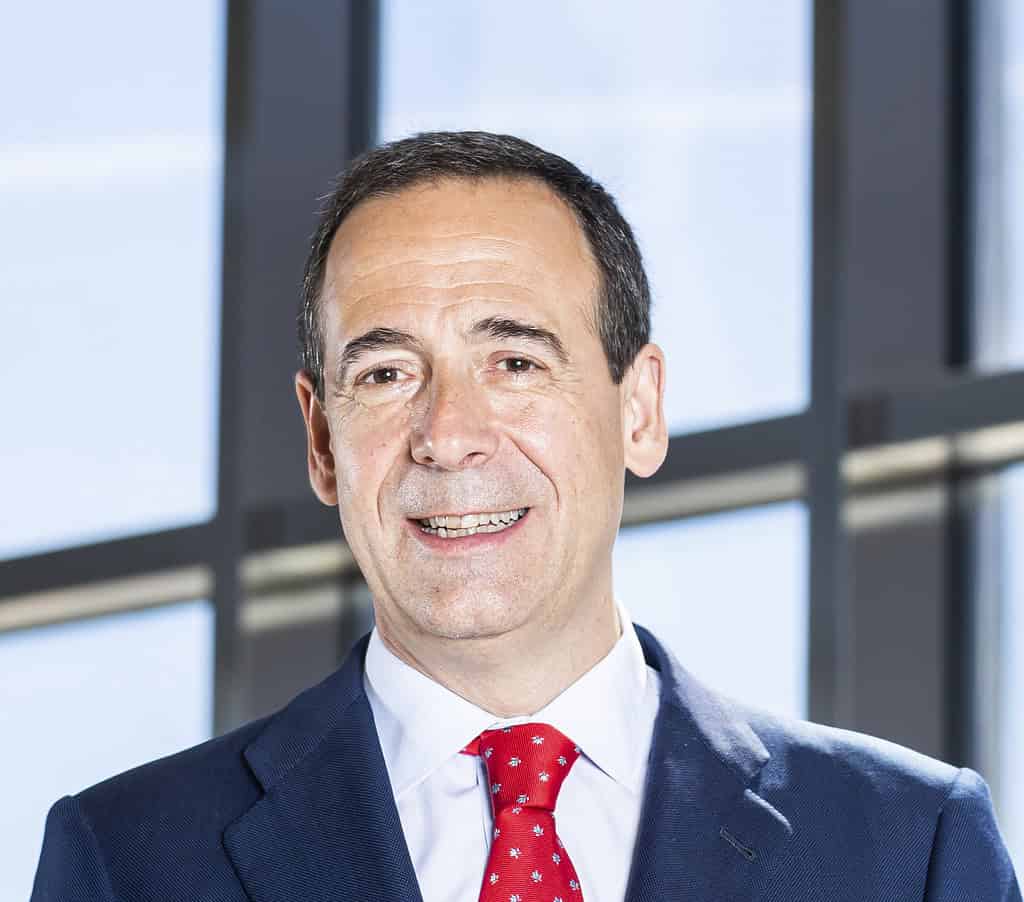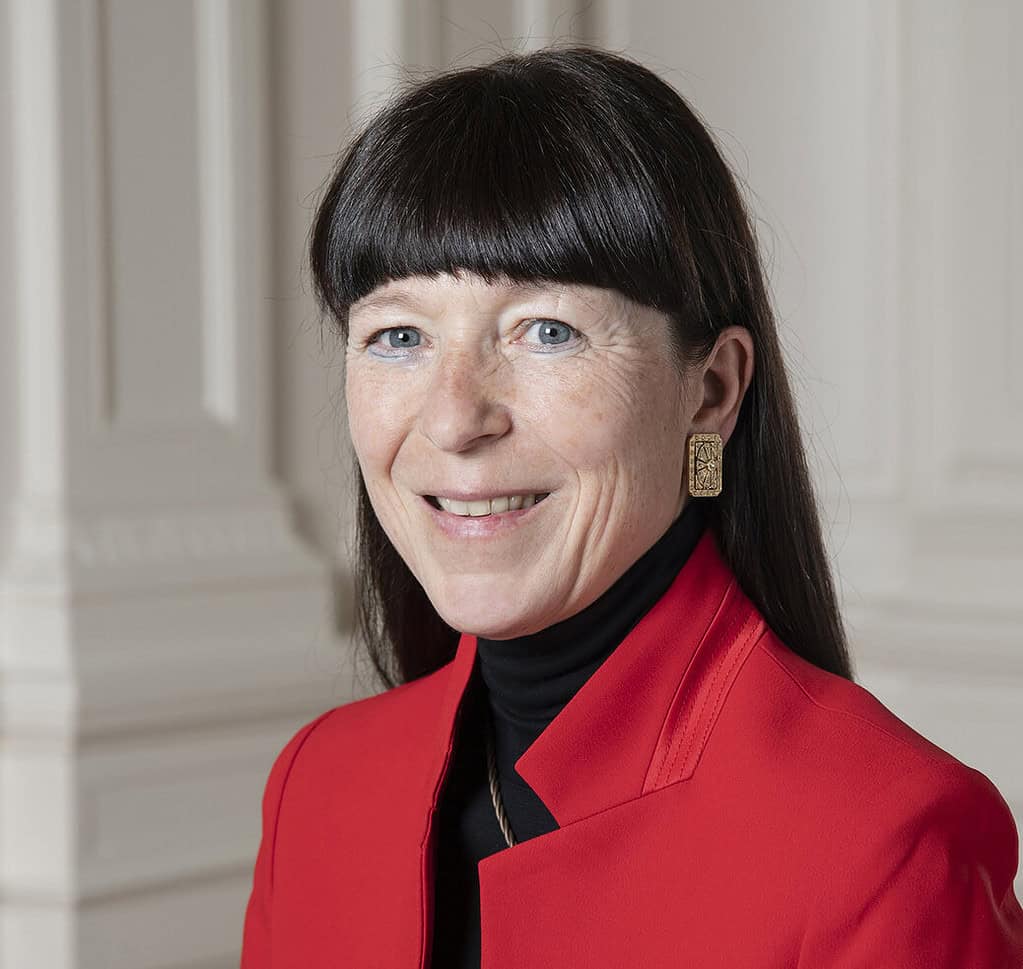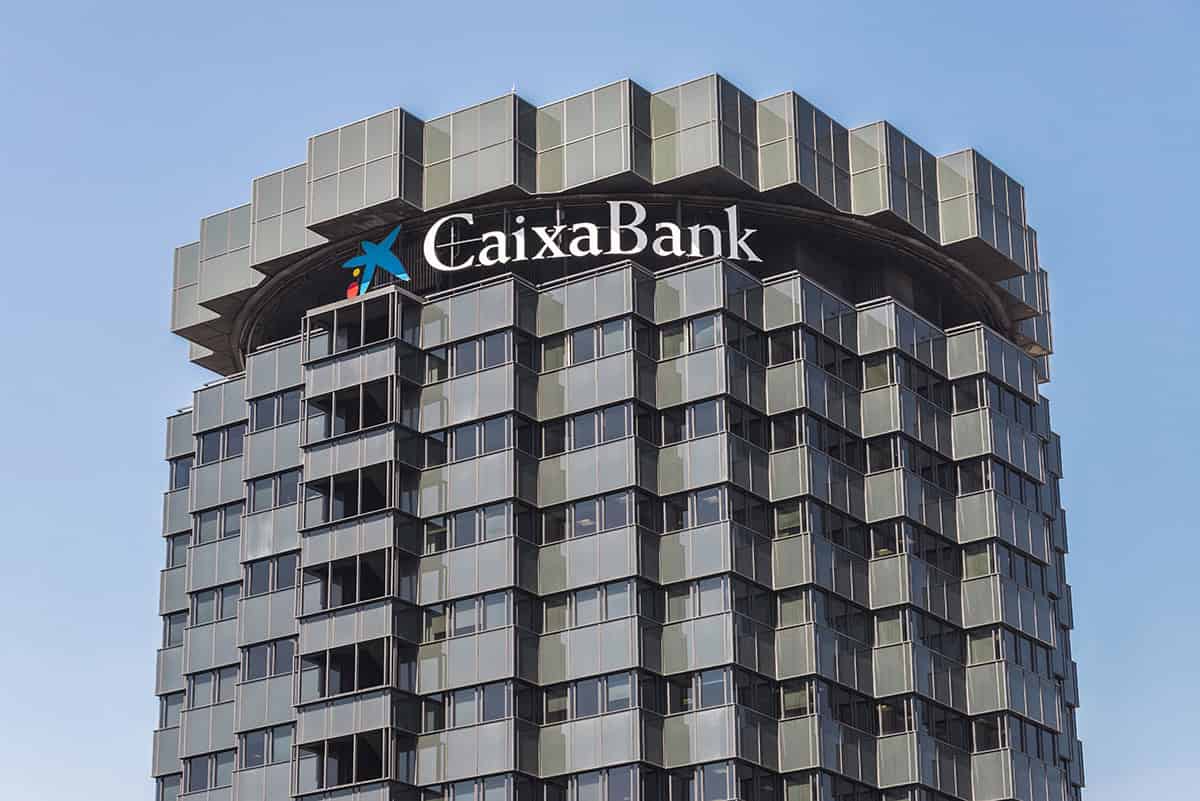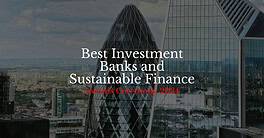Banks see client growth and a bump in transactions and sustainable lending.
Most Western European banks had an exceptional 2023, as higher interest rates boosted lending margins. The resulting increase in net interest income was the main driver of a broad-based surge in European banks’ profitability over the year, enabling them to earmark more than €120 billion (about $128 billion) to distribute to shareholders through a combination of higher dividends and share buybacks. With their strong franchises, the largest banks have led the way in this, as they are best placed to maintain their profitability when the interest cycle turns.
The digital transformation of Europe’s banks gained momentum last year, with practically all banks reporting record numbers of new digital customers, transactions, and logins. As part of upgrading their general banking apps to make them more interactive and personalized, European lenders are increasingly looking to artificial intelligence and other emerging technologies to achieve transformative change.
As leading banks strengthened their climate change commitments, sustainable financing also increased globally. The year saw banks undertaking more sustainable lending and green bond issuance while decarbonizing their legacy loan portfolios. They are also introducing more targeted sustainable savings and investment products and new ways of helping their customers through the green transition.
| Best Banks in Western Europe | Andorra | Credit Andorra |
|---|---|
| Austria | BAWAG |
| Belgium | BNP Paribas Fortis |
| Cyprus | Bank of Cyprus |
| Denmark | Danske Bank |
| Finland | Nordea |
| France | Credit Agricole |
| Germany | Commerzbank |
| Greece | Eurobank |
| Iceland | Landsbankinn |
| Ireland | AIB |
| Italy | UniCredit |
| Liechtenstein | LGT |
| Luxembourg | Spuerkeess (BCEE) |
| Malta | HSBC |
| Monaco | CFM Indosuez Wealth Management |
| Netherlands | ING |
| Norway | DNB |
| Portugal | Banco Santander Totta |
| Spain | CaixaBank |
| Sweden | Nordea |
| Switzerland | UBS |
| United Kingdom | Lloyds Bank |
Regional Winner
CaixaBank has once again won our awards as Best Bank in Western Europe and in its home country, Spain. The awards recognize the bank for its strong financial performance following the integration of Bankia consequent on the 2021 merger, its ongoing leadership in digital innovation, and its commitment to society through the La Caixa Foundation. Profits were up 54% to €4.8 billion, while gross income grew by 28%.

Throughout 2023, CaixaBank supported its retail and business clients by financing their projects and managing their savings via its business model committed to financial inclusion and support for the most vulnerable segments of society.
Core revenues were up 31.6% to €15.1 billion in the year, primarily driven by net interest income—up 54% to over €10 billion. Insurance services also saw strong growth (up 19.6%), while gross income from equity investments rose by 26.4%. Meanwhile, the bank’s cost-to-income ratio improved, falling to 40.9%, a 9% drop from the previous year.
During a highly challenging 2023, the bank witnessed healthy commercial activity and granted 280,000 loans and 80,000 retail mortgages.
CaixaBank also saw positive net inflows to mutual funds, savings insurance, and pension plans, up 34% on the year. The bank boasts strong liquidity and capital buffers, with €160.2 billion in liquid assets. Its return on equity (ROE) was 13.2%, and the common equity tier 1 (CET1) ratio was 12.4% at the end of the year.
Country Winners
This year’s winner in Italy, UniCredit has seen a remarkable turnaround in its performance in recent years, as the bank has implemented its “UniCredit Unlocked” strategy. The results are tangible, with group net profits up over 50% to €8.6 billion. Within Italy, total revenues were up 19.4%, and operating profit increased by 36.5%.
Much of this turnaround is credited to CEO Andrea Orcel, who took the helm in 2021 and oversaw nonstop profitable growth through the fourth quarter of 2023 and, more recently, oversaw the bank’s UniCredit Unlocked transformation plan.
The bank’s net revenue growth, cost discipline, capital efficiency, and investments contributed to its 16.6% return on tangible equity (ROTE). At the same time, UniCredit’s asset quality and defensive strategy resulted in a CET1 15.9% ratio, which put the bank in a strong position during uncertain times.
The winner as the Best Bank in Germany, Commerzbank continued its dramatic turnaround story. The bank celebrated its best result in 15 years, with net profit up more than 50% to €2.2 billion. Strong customer business and interest rate developments led to solid net interest income, while revenues increased to €10.5 billion.
Its Strategy 2024 plan met, and sometimes exceeded, significant milestones ahead of schedule. More ambitious goals have been added for its new Strategy 2027, such as expanding its revenue base to be less dependent on net interest income.
Commerzbank acquired a majority stake in Hamburg-based Aquila Capital Investmentgesellschaft in January of this year, expanding the bank’s sustainable asset management offerings.

The bank’s nonperforming loan (NPL) ratio stood at a very low 0.8%, and its CET1 ratio rose to 14.7% at year-end 2023.
The Best Bank in Austria winner, BAWAG Group had a strong year with core revenues up 16% and net profitability 34% higher. The bank extended its reach beyond the home market with its recent acquisition of Knab, which will expand BAWAG’s footprint in Dutch banking for small and midsize enterprises (SMEs) and retail. Last year, BAWAG also acquired Peak Bancorp, the holding company for Idaho First Bank, with the aim of growing the bank’s community-focused retail and SME business in Idaho and adjacent markets.
It was a strong year for the bank, with a net profit of €683 million and a return on average tangible common shareholders’ equity of 25% despite a subdued market.
BAWAG ended 2023 with a CET1 ratio of 14.7% and €475 million in excess capital, slated to be reinvested into the bank. Meanwhile, its customer deposits and funding were up 4% and 6%, respectively, while the bank’s NPL ratio stood at 1%.
ING, a market leader and our winner in the Netherlands, added 750,000 primary retail customers over the year to reach 15.3 million. The bank’s launch of its Everyday Roundup digital offering in the Netherlands continues to attract new customers. Retail banking fee income increased through higher fees for payment packages and growth in assets under management (AUM).
As part of ING’s commitment to assist sustainability transition, it increased its sustainable finance from €101 billion in 2022 to €115 billion in 2023.
The bank’s profits nearly doubled to €7.3 billion, and its year-end ROE and CET1 ratios were 14.8% and 14.7%, respectively, fueled by its robust retail and wholesale banking lines, higher interest income, and quality assets.
BNP Paribas Fortis, again the winner as Best Bank in Belgium, spent 2023 overcoming the logistical challenges of migrating 3 million customer accounts following the merger with bpost bank completed at the beginning of this year. At the same time, it delivered strong revenue growth of 9.1%, a 9.4% growth in net banking income of €10.6 million compared with 2022, and a 16.2% year-end CET1 ratio.
Last year also saw a 14% increase in digital contacts via the bank’s Easy Banking App and the Easy Go and Easy Guide modular packs launched to improve customer multichannel access.

Spuerkeess (BCEE), the winner in Luxembourg for the third time, has been wholly owned by the State of Luxembourg since its foundation in 1856. It is widely known as Banque et Caisse d’Epargne de l’Etat (BCEE). Today, it is the market leader for retail banking services in Luxembourg, with a 47.3% overall market share and a 51% share of the domestic mortgage market. The bank reported a semiannual net profit of €220 million, up 24.4% compared with first-half 2022. Its strong capital buffers are reflected in a CET1 ratio of 22%.
As part of its internal transformation program, the bank announced this year a new partnership with Euroclear’s funds platform to centralize its funds’ distribution and execution services.
UBS, which wins this year’s Best Bank in Switzerland award, posted an underlying pretax profit of $29.9 billion, including $28.9 billion of negative goodwill from last year’s Credit Suisse acquisition, and a 14.5% CET1 ratio. Since the acquisition, UBS has gained $77 billion in net new assets while stabilizing and integrating the latest business. The bank plans to restructure and optimize the consolidated results.
This year’s best bank in Liechtenstein is LGT, the international private banking and asset management group owned by the Princely House of Liechtenstein. LGT enjoyed another very strong year as AUM rose 10% to 316 billion Swiss francs (about $345 billion), the highest year-end level in its history.
Net new money inflows of CHF 21.9 billion corresponded to an 8% growth while operating income increased by 11%. In addition to organic growth through net new money, LGT’s acquisition of Abrdn Capital’s UK wealth management business contributed CHF 6.4 billion for the year. LGT provides expertise, expanding digital offerings, an international presence and a stable business model that continues to attract new clients.
Our winner in Monaco CFM Indosuez Wealth Management is one of the principality’s largest banks and one of only two Monegasque companies listed on the Euronext Paris stock exchange. Consolidated group revenues increased by 23% to €197 million, while the bank’s overall operating profit of €77.5 million compares favorably to €55.6 million in the previous year.
The wealth manager recently launched its “Work creates wealth” campaign, aimed at younger English-speaking clients representing less than a third of its customer base. CFM Indosuez Wealth Management has seen an increase in its online banking clientele but knows that human relationships remain extremely important.
HSBC wins our award for Malta on the back of record results. Profit before tax was up an impressive 141% to €133.9 million, driven primarily by increasing net interest margins and higher earnings from HSBC’s insurance subsidiary. ROE of 17.1%, compared to 7.7% for 2022, was the best for a decade.
The bank benefited from stronger customer relationships and an increasing net interest income. At the same time, it leveraged its international footprint and maintained its robust risk management culture.
It made further progress in reducing costs, with the bank’s cost-efficiency ratio down to 44% compared with 68% the previous year. Capital and liquidity ratios were well above regulatory requirements, with the CET1 ratio rising to 20.6% at the end of 2023.

Bank of Cyprus wins the title, having achieved an extraordinary improvement in its profitability over the past year, with post-tax profit surging to €487 million compared to €57 million in 2022. The bank benefits from a diversified income stream; and its insurance companies, Eurolife and GI, are leading players in Cyprus’ life and general insurance business. The net insurance result for the year was up 20%.
The well-capitalized institution delivered a ROTE of 24.8%, which surpassed its 2023 targets, and a year-end CET1 ratio of 18.7%. The bank also maintains a highly liquid balance sheet, with €9.6 billion placed at the European Central Bank.
The winner in Greece, Eurobank, is firing on all cylinders, with core operating profit before tax up by 69.4%. Its net interest income rose by 46.9 %, while net fee and commission income was up 4.2%, resulting in core income growth of 35.8% over the previous year.
The better-than-expected performance continued, with its nonperforming exposure dropping to 3.5% from 2022’s 5.2%, and its CET1 ratio reaching 17% at the end of the year. Eurobank ended 2023 with an annual €1.8 billion increase in its loan book, with a fifth of disbursements allocated to green loans.
The bank is engaged in a customer service enhancement program to improve customer accessibility at every point of contact. Retail banking staff are given sign language training to serve customers with hearing disabilities through video calls. For customers with total or partial visual impairment, the bank is installing voice guidance at over 800 ATMs across Greece.
Founded in 1950 and currently with €22.2 billion AUM and €43 million profit based on its latest published accounts, this year’s winner in Andorra is the market leader Credit Andorra, which has now adopted the brand name Creand. The acquisition of Vall Banc in 2022 and its subsequent integration have strengthened the bank’s leadership franchise in retail and private banking in the principality, the sixth-smallest state in Europe.
A new agreement this year with Onyze, a leader in digital asset custody, will allow the bank to offer its clients crypto-asset buying and selling services through Creand Wealth Management.
North of the Pyrenees, Credit Agricole takes the Best Bank in France award. The bank reported a record net income of €8.25 billion in 2023, a 3.3% improvement over the previous year, and also a ROTE of 12.6%.
Its asset management business saw strong inflows of €26 billion, while corporate and investment banking posted a record performance. Private banking and asset servicing increased in scale following the purchase of Belgian private bank Degroof Petercam and the July 2023 acquisition of RBC Investor Services’ European operations.
In January of this year, the bank acquired a 7% minority stake in payments-technology company Worldline. Credit Agricole and Worldline recently launched CAWL, an all-in-one payment offering for merchants in France.
The return winner in Portugal, Banco Santander Totta, increased its net profit last year by 57.3% to €895 million, with net income from banking activities rising by 51.5% to close to €2 billion.

The bank’s commercial and digital transformation drove profits in 2023. Its client base continued to increase, adopting the bank’s digital offerings, leading to a more than 25% increase in access via its digital channels. Last year, customer transactions were up 12.9%, while digital customers grew by 6%. Net customer subscriptions to investment funds and financial insurance products led to a portfolio growth of 11.1% compared to the end of 2022. Banco Santander Totta also ended the year with a CET1 ratio of 16.9%.
Lloyds Bank, a repeat winner in the UK, put in another strong performance. Net income rose by 3% to £17.9 billion (approximately $22.4 billion), driven by a 5% increase to £13.8 billion in net interest income. Other income increased by 10% overall, driven by growth in retail, commercial banking, insurance, pensions, and investments. Lloyds’ CET1 ratio of 13.7% is ahead of the bank’s revised target of around 13%.
New products included mobile-first mortgage onboarding, Lloyds Bank 360 for the mass affluent sector, and a digital invoice finance platform for digitizing the SME portfolio. Following its acquisition of Tusker, a UK market leader in managing and leasing electric and ultralow-emission vehicles via salary sacrifice schemes, Lloyds Bank currently finances one in eight ultralow-emission vehicles on the UK road network.
Returning to majority private ownership in 2023, AIB (Allied Irish Bank) takes home the title of the Best Bank in Ireland. The bank delivered a solid financial performance, with a profit after tax of €2 billion, while its total income increased by 64% to €4.7 billion.
The year also saw AIB end its 2021-2023 strategic cycle, which delivered an enhanced suite of products and services to its record 3.3 million clients. AIB is a green-lending leader in the Irish marketplace, accounting for 30% of its total €12.3 billion of new lending in 2023 and environmental, social, and governance (ESG) bonds, where AIB has issued €5.75 billion bonds to date.
The winner in Denmark, Danske Bank has dramatically improved its profitability, posting a net profit of 21.3 billion Danish kroner (about $3 billion) compared to a loss of DKK 4.6 billion in 2022.
Higher interest rates, better-than-expected macroeconomic conditions, and strong commercial momentum contributed to a total income of DKK 52.4 billion. Operating expenses were down 4% overall, and the company ended the year with an 18.8% CET1 ratio.
In January of this year, Danske Bank entered into an agreement with Backbase, a fintech company, to provide access to the Backbase Engagement Banking Platform as part of its improved digital customer experience.

Farther north, the winner in Finland and Sweden, Nordea, had a strong 2023 despite a weakened economic environment. The bank maintained good business momentum and delivered solid financial results. Its full-year ROE increased to 16.9% from 13.8% in 2022.
The use of Nordea’s digital services rose significantly, up 13% on the year and reaching a record high of 1.4 billion logins. Emphasizing its omnichannel customer approach, Nordea also held more than a million client advisory meetings over the year, up 9%.
In Finland, Nordea saw total income in personal banking increase by 29% and net interest income rise by 46%. In business banking, net interest income increased by 33%, driven by improved deposit margins.
Meanwhile, in Sweden, Nordea’s total income increased by 9% in local currency, with net interest income growth of 8%, while net fee and commission income rose by 9%. Additionally, Nordea Group’s AUM grew by 5% to €378 billion, and the CET1 ratio was 17% at the end of 2023.
Our winner for Norway is DNB, where profits were up 18% to 39 billion Norwegian kroner (roughly $3.5 billion) in 2023. The bank performed well across all customer segments, with a substantial contribution from the corporate market and international offices. An increase in transaction volume of 20% made DNB Norway’s leading transaction bank for the year. Competing against more than 100 domestic banks, DNB delivered substantial year-end numbers with an ROE of 14.6% and a CET1 ratio of 18.2%.
Landsbankinn, the winner as Best Bank in Iceland, ended 2023 with a leading 40% retail market share. The country’s unique geography renders robust digital offerings vital.
Sustainability is another key customer demand, and green funding now accounts for 46.5% of the bank’s nondomestic funding and 26.6% of total borrowing. For the fifth year in a row, Landsbankinn topped the Icelandic Performance Satisfaction Index for banking customers and reached its highest-ever market share in retail banking at over 40% by the end of the year.




